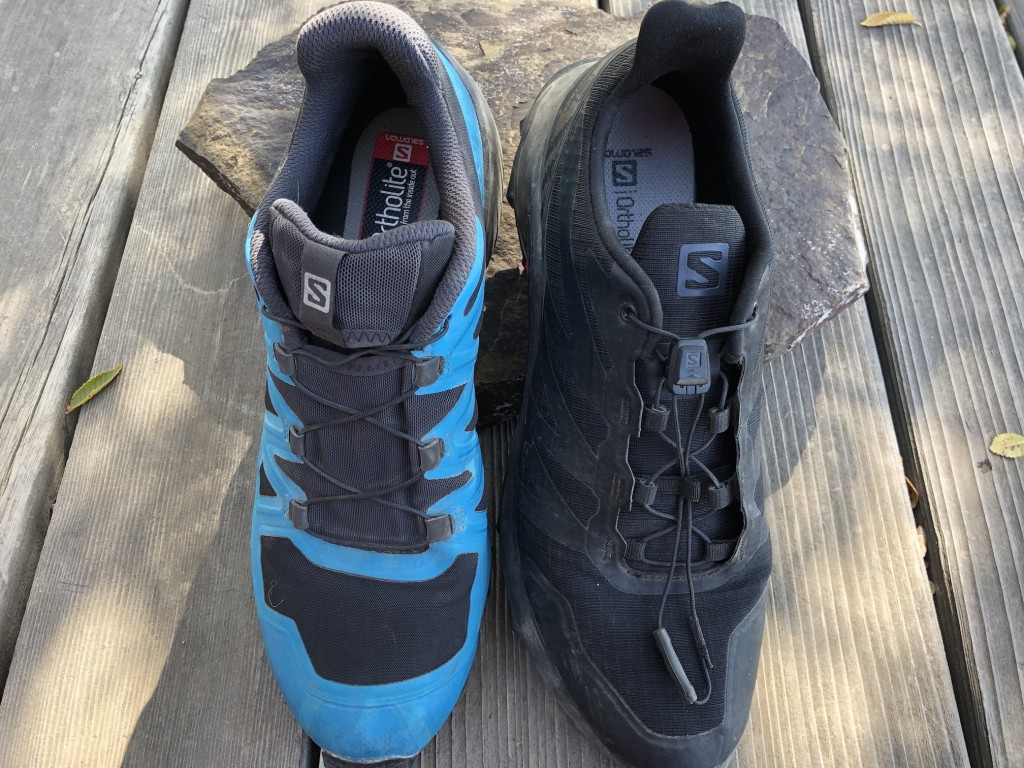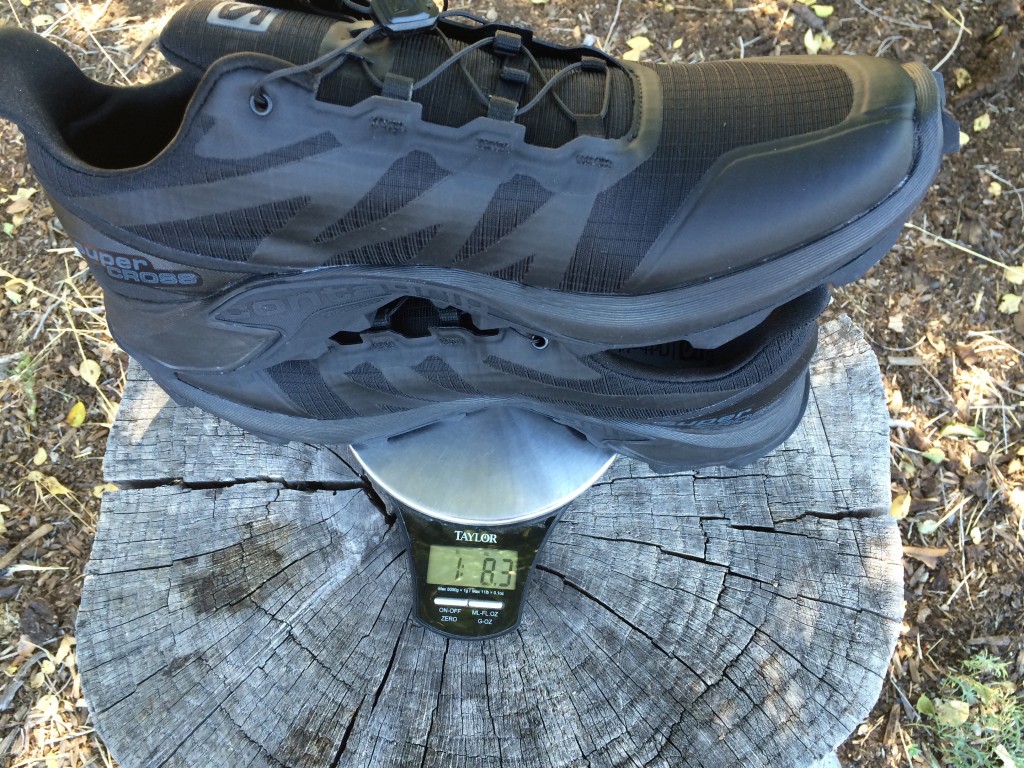Salomon Supercross Review
Our Verdict
Our Analysis and Test Results
When describing the Salomon Supercross, it is impossible to not compare it to the very similar Salomon Speedcross 5. They look very similar; both feature the largest and most aggressively lugged outsoles on the market today. The Supercross plays the role of the more affordable option, while the slightly more expensive Speedcross is unquestionably higher-performing due to its far snugger and more responsive fit. One complaint that people often have about the Speedcross is that it fits excessively narrow, especially in the forefoot, thereby greatly limiting the number of people that can comfortable wear it. The Supercross fixes that issue with a wider design, while also employing a carriage system in the upper that is a bit looser and less tight. Runners with wide or high volume feet that have never been able to wear the usually narrow Salomons, but want to, should seriously consider the Supercross as a viable option.
Performance Comparison
Foot Protection
With 29mm of stack height in the heel, it is no surprise that heel strikers are amply rewarded by wearing this shoe. In the forefoot, by comparison, there is only 19mm of underfoot protection, and the difference is very noticeable. In that way, this shoe offers a nice balance of sensitivity in the forefoot while protecting the heel. That said, we have noticed from wearing these shoes for years that the deep lugs have a propensity to wear down or rip off over time, and as they do so, the forefoot protection becomes noticeably lower.
The upper of this shoe is made of durable rip-stop mesh that is relatively hot and not the most breathable. Thin TPU overlays add structure but do little to protect the foot inside the shoe. The toe bumper is just a slightly thicker overlay, with little structure that can absorb a head-on blow, and so these uppers are not among the most protective you can find, or as protective as the heavily rubberized Speedcross.
Traction
The outsole of this shoe features large arrow-shaped lugs that are 6mm deep, well spaced apart, and made of Salomon's sticky Contagrip rubber compound. This pattern of large lugs spaced far apart offers the absolute best traction on slippery surfaces, such as steep grass or tundra, steep loose dirt, mud, or snow. The Contagrip is also quite sticky on rock, although it is also fairly soft, and running over jagged rocks too frequently will wear the lugs down quickly. Due to this softness, these also aren't the best choice for normal runs on hardpacked trails.
Stability
With its 10mm of heel-toe drop and high 29mm of stack height in the heel, one feels slightly like they are wearing a high-heeled shoe with the Supercross on. Truly, we have found these shoes to be some of the least stable we have tested, even less stable than similarly tall Hokas, which feature a relatively modest heel-toe drop. The wider forefoot platform makes landing and taking off easier than the narrower Speedcross, but on sidehills and when going steeply downhill, the high heel doesn't really do one any favors. The lacing system also doesn't grip the foot nearly as snugly as the Speedcross, lowering the stability one feels inside the shoe.
Comfort
This is a comfortable shoe; it uses a quick lace system to hold the foot in place that is very easy to use, you must simply pull the little plastic buckle up the laces until the shoe is tight, and it never needs to be retied due to loosening. Simply tuck the ends of the “laces” under an elastic strap on the tongue to keep them out of the way. While it has minimal amounts of padding around the ankle and heel opening, the fit is very comfortable with no chafing or rubbing. In general, the fit of this shoe is spot on size-wise, and is roughly average width, despite being “wide” compared to most other Salomon shoes. In our water test, these shoes were among the most absorptive when compared to others after being dunked in water, and we haven't found that they breathe all that well either; they definitely run a bit warm.
Weight
Our pair of men's size 11 shoes weighed in at 24.3 ounces on our independent scale, which makes them among the heaviest shoes in this review. If you value lightness as a prized commodity in your running shoes, you will likely want to look elsewhere. That said, these shoes don't feel excessively clunky or heavy when running in them, but the scale doesn't lie.
Sensitivity
These shoes present a bit of a paradox when considering sensitivity. Their high heels are among the least sensitive, but at the same time, the softer and thinner foam in the forefoot allows a lot of trail feel through the shoe. This feeling becomes more pronounced as the lugs begin to wear down. They feel pretty much exactly the same underfoot as the Speedcross when it comes to sensitivity vs. underfoot protection.
Value
These shoes retail for twenty dollars less than the Speedcross per pair, and are also only slightly more expensive than the most affordable options featured in this review. If optimal traction for the lowest price is your goal, this is the shoe for you. That said, by spending just a few more dollars, you can get a far higher-performing shoe in either a narrow or wide platform; for the absolute best value, that is what we would recommend doing.
Conclusion
The Salomon Supercross is a lower-cost alternative to the Salomon Speedcross with all of the same advantages, namely the incredible traction. However, they don't fit quite as precisely, and therefore don't crush difficult mountain running with quite the same gusto. They fit much wider than most Salomons, and so could appeal to a wider audience, and are a good choice on the budget end of the trail running shoe spectrum.














